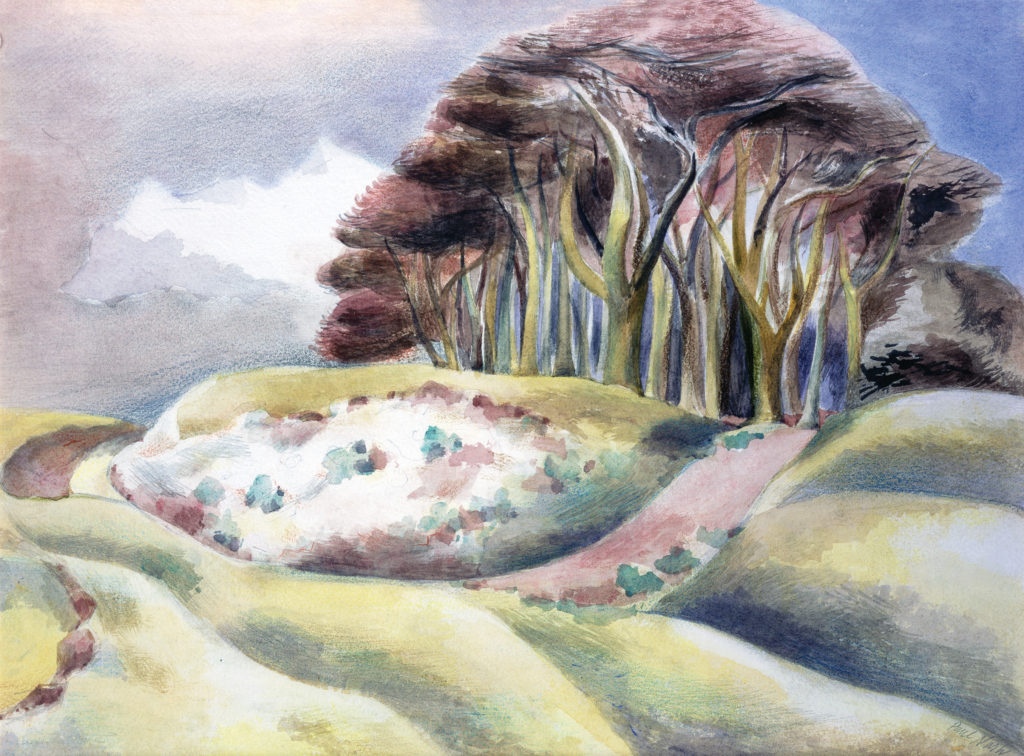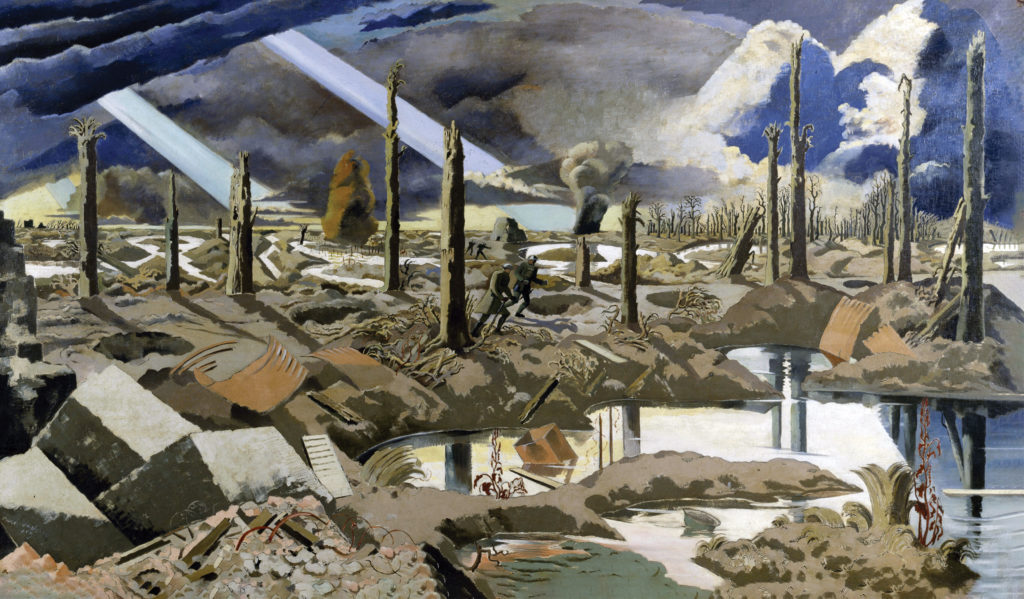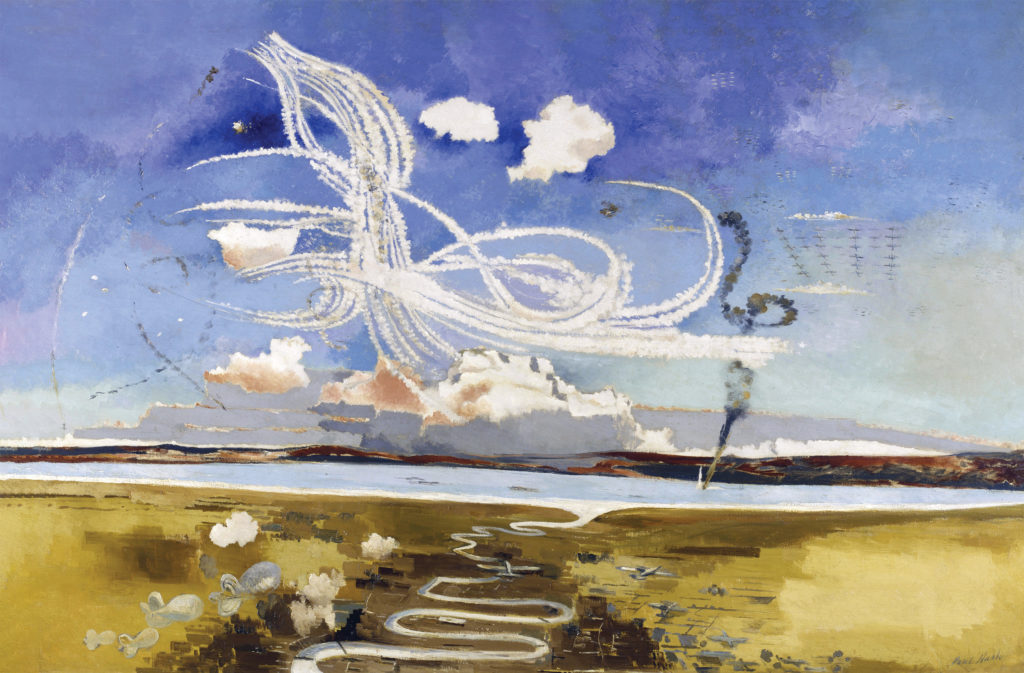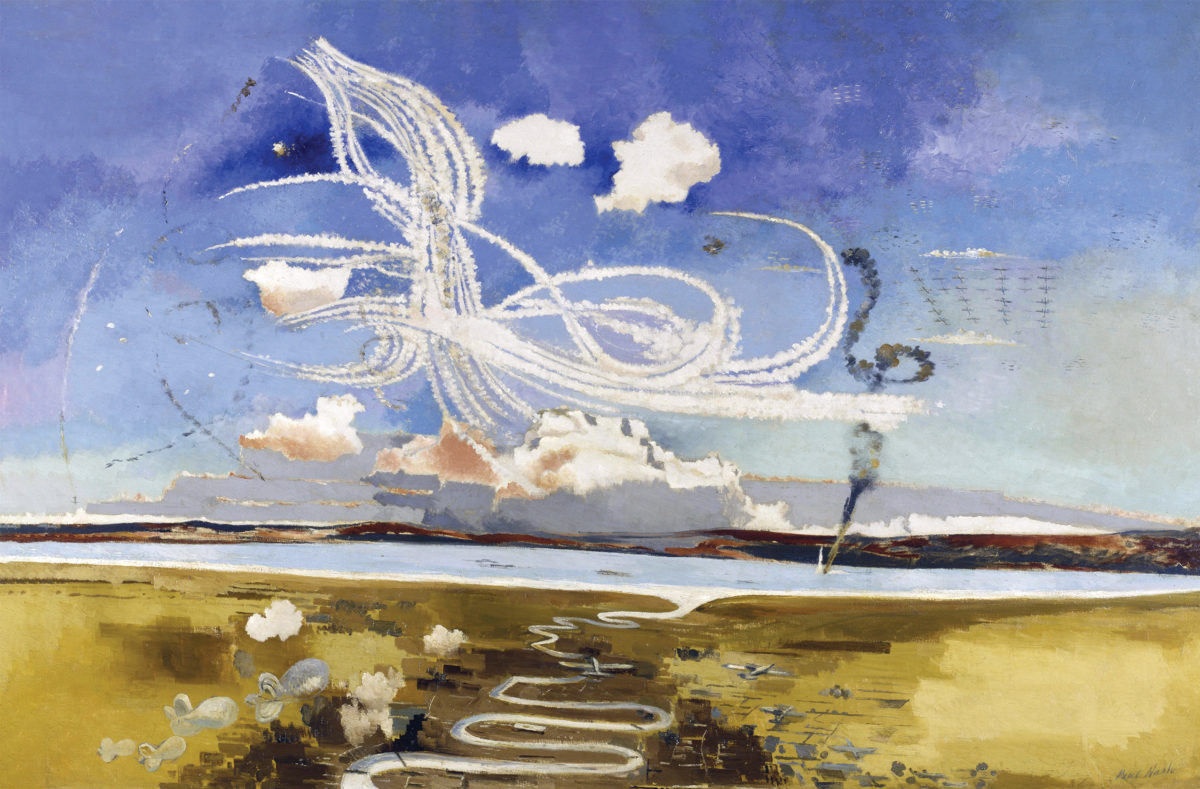Art has chronicled wars about as long as they have been fought. Usually created by the winners, war art generally focused on the genius of the country’s military leaders or the heroism of its fighting men. Accuracy in depicting the experience of war has tended to take second place to propaganda inspiring the masses; but by the 1800s a degree of authenticity in uniforms, weaponry and mise-en-scène became the preferred norm.
The horrific battlefield reality of World War I changed that. As individual valor became a struggle for survival under a deluge of industrialized mass destruction, the twentieth century’s surrealism cultural movement in art, literature and other media—an attempt to portray reality via the unconscious mind’s “super-truth” (surreality) using bizarre, fantastic and grotesque dreamlike or nightmarish images—became just as relevant and acceptable a means of capturing war’s true nature as the best researched and most meticulously “realistic” artwork of the nineteenth. Arguably, the most famous example of surrealist painting depicting war is Guernica, Pablo Picasso’s cubist-influenced summation-in-metaphor of the Spanish Civil War (1936–1939).
Yet another example of art capturing a surreal vision of war is the prodigious body of work chronicling two world wars by the English artistic polymath Paul Nash.
An Artistic Career Changed By War
Nash was born in Kensington, London on May 11, 1889, the son of barrister William Harry Nash and Caroline Maude, the daughter of a Royal Navy captain. When his mother began showing signs of mental illness, in 1902 the family moved to Iver Heath, Buckinghamshire, hoping the rustic atmosphere would improve her condition.
It didn’t—Caroline died at age 49 in a mental institution in 1910—but it was in Buckinghamshire that Paul began his love affair with landscapes, particularly the iron age hill forts atop Wittenham Clumps, an early inspiration to which he would frequently return.

Nash initially tried to follow his maternal grandfather’s profession, but failed the Naval Entrance Examination and instead pursued art at several schools, including St. Paul’s School, the London Council School of Photo-Engraving and Lithography, and the Slade School of Arts. He was poor at drawing figures, but developed an enthusiast’s flair for landscapes, especially those with an ancient background. As he once put it, “My love of the monstrous and magical led me beyond the confines of natural appearances into unreal worlds.” Nash also wrote poetry and plays, and gave shows of his paintings in 1912 and 1913 before achieving wide public success with his Tree Topped Hills in the summer of 1914.
That same summer, however, was to set his budding artistic career down a different path as the June 1914 assassination of Austrian Archduke Franz Ferdinand in Sarajevo followed by a succession of declarations of war set Austria-Hungary, Serbia, Russia, France, Germany, Belgium and Britain on the road to mutual Armageddon.
Saved By Falling Into A Trench
On September 10, 1914, Nash enlisted in the Home Service, as a private in 2nd Battalion, the Artists’ Rifles, 28th London Regiment of Territorials. His initial duty was primarily to guard the Tower of London and in December he married writer and women’s suffragist Margaret Odeh. Aside from the occasional Zeppelin raid on London, the war seemed a distant Channel away, but that sheltered soldier’s life changed again in August 1916, when he underwent officer training, and after earning his commission, in February 1917 Second Lieutenant Nash got his first front-line deployment with the Hampshire Regiment at St. Eloi in the Ypres salient.
The Flanders sector was between offensives when Nash arrived and although he knew of the past carnage inflicted on the area, he wrote that with the spring the land seemed to be slowly healing itself. On May 25, however, Nash fell into a trench and broke a rib, necessitating his hospitalization in London on June 1.
A few days later his regiment took part in an assault on Hill 60—and was slaughtered. Nash fully realized that an arbitrary twist of fate—his accidental injury—had saved his life. While in hospital, he worked up 20 sketches he’d made, most of which were spring landscapes, into more polished works in ink, chalk and watercolors.

November 1917 saw Nash back in Ypres, now with an assigned batman and chauffeur, and an official commission to create propagandistic art. The British offensive around Passchendaele (July–November 1917) had been going on for three months and the landscape that he had earlier viewed with such hopeful optimism now showed the effects of incessant rain, flooding, and devastating artillery fire.
“I Am A Messenger”
Although Nash’s abstract depictions of what he saw were well received, they betrayed an ambiguity toward the ordeal that the soldiers on both sides had to endure. His landscapes, once a celebration of nature, now constituted an accusation of what he regarded as the war’s desecration of nature.
On November 16, he intimated to his wife: “It is unspeakable, godless, hopeless. I am no longer an artist interested and curious. I am a messenger who will bring back word from the men who are fighting for those who want the war to go on forever. Feeble, inarticulate, will be my message, but it will have a bitter truth, and may it burn their lousy souls.”
Disillusionment notwithstanding, Nash, like his combatant brother officers, carried on with his front-line artist’s duties right to the end of the war, and after being discharged he and his wife moved to Dymchurch in 1919. In that same year The Menin Road went on a delayed public exhibition.

Commissioned by the Ministry of Information in 1918 as a tribute to the heroism and sacrifice of the British soldiers for the “Hall of Remembrance”—a memorial that ended up never being built—the painting’s human subjects were, typically, all but lost in the landscape, which artist-critic Wyndham Lewis described as “an epic of mud.”
In 1921, Nash collapsed and underwent a week of drifting in and out of consciousness, a condition that the doctors classed as “emotional shock.” His asthma and the death in June 1921 of one of his best friends, Claud Lovat Fraser, may well have contributed to his condition. He sought recovery in the natural world, his output including overviews of the coasts of Kent and Dorset, Chiltern and Sussex downs, Romney Marsh and the ancient sites in Avebury, Wiltshire. In the process, they reflected his increasingly surreal approach.
Nash and his wife had to scramble for their living throughout the interwar years, but Nash was helped considerably by his talent and education in design, and his versatility in its use. Besides its being a fundamental part of his abstract, surrealist artistic style, he applied it profitably to such practical items as book jackets, book plates, ceramics, fabrics, posters and even a complete bathroom. Another application was inspired by another friend and colleague, actor, director and theater designer Gordon Scott, who got Nash to adapt his style to the stage. During the 1930s he was a contributing art critic for The Listener. Although he never called himself a modernist, Nash established himself in abstraction and surrealism by 1933, when he became a driving force in the formation of the British modernist group Unit One.
Painting the Battle of Britain
After a second world war broke out in 1939, Nash was appointed by the War Artists’ Advisory Committee to resume his work as a full salaried artist, this time attached to the Royal Air Force. Nash created a great number of paintings during the war’s first year, several of which depicted shot down German aircraft, his subjects ranging from recovered shot-down Messerschmitt Me-109s to the more abstract Battle of Britain, contrasting the free contrails of British fighters with the more orderly German formations, and Totes Meer (dead sea), in which a Channel seascape is encrusted with the carcasses of German aircraft.
Although his works were well-received by the public, the Air Ministry did not take approvingly to Nash’s modernist style, nor to his unwillingness to concentrate on portraits of aircrewmen. In December 1940 the WAAC canceled his full-time contract; but its chairman, Kenneth Clark, appreciated Nash’s talents enough to be left aghast at his own committee’s decision. In January 1941 Clark persuaded the WAAC to lay aside five hundred pounds for his work in aerial combat, starting with two series of watercolors, Raiders and Aerial Creatures.
By 1944 the fortunes of war had turned in the Allies’ favor, and Nash marked the occasion with one of his most abstract works, Battle of Germany. Contrasting with the faraway, inviolable moon—a stabilizing, natural presence in many of his landscapes dating back to World War I—a German factory is subjected many times over to the man-made horrors that the Luftwaffe had previously visited on British cities.
The last 18 months of Nash’s life were spent in Dorset in what he called “reclusing melancholy.” Although his asthma prevented him from flying in aircraft, he had been coming to terms with death using aerial metaphors, stating that souls of the dead were “winged creatures…not unlike the ghost moth.” Paul Nash died aged 57, of heart failure related to his years of asthma at Boscombe, Dorset on July 11, 1946.





